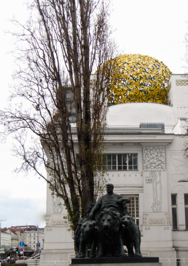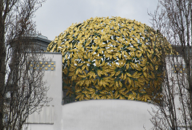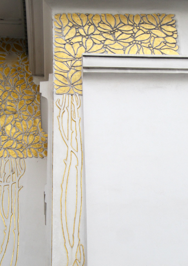secession building
Opera and NAschmarkt
Vienna, Austria
europe
december 11, 2010


secession building
Opera and NAschmarkt
Vienna, Austria
europe
december 11, 2010



The Secession Building known simply as “The Secession”, is a unique piece of architecture distinguished by its golden openwork dome of gilded leaves. It stands today as an active arts exhibition gallery for contemporary art and art installations, although its presence also serves as a memorial to Vienna’s history. Between 1896 and the end of World War I, a wave of new thought and ideas permeated the intellectual community of the city. Elsewhere in Europe during this period, “L’art pour l’art” (art for art’s sake) implied withdrawal from any political activity. In Austria it implied loyalty to the urban middle class, a social class of which the artists were an essential part. A life in art became a substitute for life in a social group, granting a liberal aspect to the individual. Art became an ersatz-religion, a resource of esoteric significance, food for the soul. Ornament became the bearer of essence, i.e., style over substance. On May 24, 1897, a group of Austrian artists and architects resigned from the Association of Austrian Artists housed in the Vienna Künstlerhaus, and formed the Union of Austrian Artists, later known as the Secessionists. Their objection to the former group was the prevailing conservatism with its traditional orientation toward Historicism. Among the founding members were: the architects Josef Hoffmann and Josef Maria Olbrich, the painters Josef Engelhart, Carl Moll, Koloman Moser, and Alfred Roller, who had studied architecture as well as painting. The first president of the Secession was 35 year old Gustav Klimt, with Rudolf von Alt, at 85 and an advocate of the the young, as honorary president. The group founded an art magazine, Ver Sacrum, (“Holy Spring”), referring to rituals in antiquity. It’s first issue, published in January, 1889 presented a graphic image by Alfred Roller that expressed the group’s intent: a young blossoming tree in a wooden vessel, its roots bursting through to open space, symbolizing the artists bursting the corset of Historicism. The publication announced the Secessionists’ intention of using exhibitions as a field for experiments in the aesthetic fusion of art and literature, graphic art and text. From the beginning, there was a broad aesthetic spectrum as artists did not follow a common style, and a euphoric sense of a new world of art. The construction of a new exhibition had always been planned by the founding assembly of the Secession. Joseph M. Olbrich prepared plans and created a key-work of Viennese Jungenstil, planning a “temple of art”. The building’s synthesis of archaic and modern, the contrast of sacral entrance, the cupola of gilded laurel leaves and the sober functionality of the exhibition space shocked his contemporaries. Critiques classified the new building as a “temple for bullfrogs”, a “crematorium”, a “mosque, “Assyrian lavatory, “an assassination on good taste” and other derogatory statements. Since then, its revolutionary qualities of space, concise silhouette, and the aura of the interior has lead it to become the apex of Viennese Art and Architecture. Two exhibitions held at the Secession building stand out historically. In April, 1902, the fourteenth Secessionist exhibition, the “Beethoven Exhibition” became a highlight of the first eight years of the Secessionist’s existence. Collectively a Gesamtkunstwerk of architecture, paintings, and sculpture, twenty-one members of the Secession created a unique Raumkunstausstellung (design space) centered around a sculpture by the German artist Max Klinger as homage to Beethoven. The Beethoven Frieze*, painted by Gustav Klimt, was placed in the left aisle of the exhibition hall and showed a monumental interpretation of Beethoven’s Ninth Symphony. Nearly 60,000 visitors attended the exhibition within three months, becoming one of the greatest hits in the Secession’s history. Nine months later, the Secessionists presented “The Development of Impressionism in Painting and Sculpture”, introducing this predominantly French artistic style to Vienna with a scholarly and historic overview of the development of impressionism, pointing toward the Secession’s artists. Art historians Julius Meier-Graefe and Richard Muther were invited to hold lectures. Their topics ranged from Tintoretto, Rubens, Vermeer, Goya, Delacroix to Cézanne, Manet, Monet, Toulouse-Lautrec, Van Gogh, etc, underscoring the Secessionist’s tradition of embracing the modern and advanced. Although the Secessionists as a defined group existed for only eight years, 1897-1905, they left their mark by their development of a new style of exhibiting arts and crafts, and became known in art historical terms as the “Vienna Secessionists”.
*The theme of the Beethoven Frieze is derived from Richard Wagner’s interpretation of Beethoven’s IX Symphony, which highlights Mankind’s yearning for happiness: weak humanity has to overcome hostile forces such as Sickness, Madness, Wantonness, Immoderation, and can find eternal bliss in the arts. Today the frieze is not only regarded as being one of Gustav Klimt’s masterpieces but also one of the most important examples of the Viennese Art Nouveau style. The painting itself recalls not only the influence of contemporaries like Beardsley, Munch, Toorop, Minne and Hodler, but also the artist’s own studies of Egyptian, Greek, Japanese, Byzantine, and Medieval art. The use of gold and the the decisive role played by the ornament, where decorative planes are introduced into the figures for the first time, mark the beginning of Klimt’s “Golden Phase”, which reached its peak in the celebrated “Kiss” exhibited in the Austrian Gallery at the Belvedere Palace.
PHOTOS: Left Column: 1. View of the gilded laurel leaf dome of the Secession Building in Vienna. 2. Detail: exterior decorative elements on the façade of the building. 3. Ver Sacrum “Holy Spring” emblazoned in gold on the façade of the Secession Building. This refers to the name of the magazine produced by the Secessionists, the name referring to rituals in antiquity. 4. Model of the Secession Building revealing the interior spaces. 5 Model of the Secession Building showing the façade. 6. Photograph, of the completed building, c. 1900. Center, Top: Façade detail above the entrance to the building. The muses represent Maleri, Architectur, Plastik or Painting, Architecture, and Sculpture. Center, Middle: Detail: Gustav Klimt’s “Beethoven Frieze” c 1902, painted in situ for the “Beethoven Exhibition” at the Secession Building. Center, Bottom: The mirrored entrance doors to the Secession Building. Right Column: 1. View of the Secession Building from the adjoining park. 2. Detail: Jugenstil painted ornamentation on the façade of the building. 3. Sacral entrance to the Secessionist Building, designed to be a “temple of art”.


... and The Beethoven Frieze









